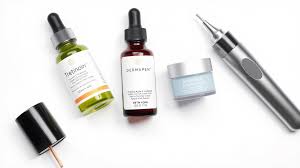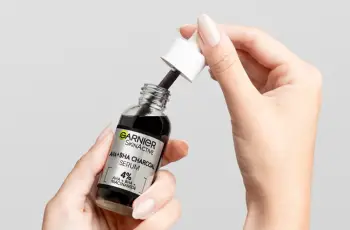
How to Use Azelaic Acid with Tretinoin – A Complete Skincare Guide
Azelaic acid and tretinoin are two powerhouse skincare ingredients, each known for their unique ability to treat complex skin issues like acne, pigmentation, and uneven texture.
While both are well-known in the skincare industry, many everyday users are still unsure about their benefits and how to safely use them in the same routine.
This article is here to break everything down, giving you a clearer understanding of how to layer azelaic acid and tretinoin for smoother, healthier, and brighter skin.
You’ll learn what each ingredient does, how they work together, and the best way to apply them to avoid irritation while maximizing results.
Can You Use Tretinoin and Azelaic Acid Together?
Yes, you can use tretinoin and azelaic acid together, and when done properly, they make a powerful duo that helps fight acne, hyperpigmentation, melasma, and dullness.
To use them effectively, you need to understand how each ingredient works, what benefits they offer, and how to avoid skin irritation by layering them properly.
Using both in the same routine can lead to incredible improvements in skin clarity, brightness, and texture—but only if you use them strategically and carefully.
What Is Tretinoin and What Does It Do?
Tretinoin, also known as all-trans retinoic acid, is a prescription-strength form of vitamin A that speeds up cell turnover and promotes new, healthy skin formation.
It’s frequently used to treat acne, sun damage, fine lines, and dark spots, helping to even out skin tone and texture over time with consistent application.
Tretinoin is more potent than over-the-counter retinol and is available in cream or gel form, typically in concentrations like 0.025%, 0.05%, or 0.1%.
Despite its effectiveness, tretinoin is known to cause dryness, redness, peeling, and purging in the early stages as your skin adjusts to the increased turnover.
Introducing it slowly into your routine and pairing it with hydrating ingredients is key to managing side effects and achieving optimal results.
What Is Azelaic Acid and How Does It Work?
Azelaic acid is a naturally derived dicarboxylic acid sourced from grains like barley, wheat, and rye, and it’s often used for its exfoliating and anti-inflammatory properties.
It works to gently slough away dead skin cells, unclog pores, fade hyperpigmentation, and soothe redness, making it ideal for acne-prone and sensitive skin types.
Unlike AHAs and BHAs, azelaic acid is less likely to irritate and can even help treat rosacea by calming inflamed skin and reducing bumps and redness.
It is commonly found in concentrations of 10% for over-the-counter products and 15–20% in prescription-strength treatments often used to target melasma and dark spots.
Azelaic acid is safe for most skin types and works particularly well when combined with hydrating ingredients like niacinamide and hyaluronic acid.
Why Combine Tretinoin and Azelaic Acid?
Together, tretinoin and azelaic acid provide complementary effects—tretinoin renews the skin from within, while azelaic acid calms and brightens the skin’s surface.
Scientific studies show that combining 0.05% tretinoin with 20% azelaic acid is highly effective at treating stubborn pigmentation, melasma, and signs of premature aging.
Azelaic acid helps fade discoloration caused by acne or sun damage, while tretinoin enhances cellular turnover, pushing fresh skin cells to the surface.
This combination targets multiple skin issues at once, but it must be used cautiously to avoid dryness, peeling, or other irritation, especially in sensitive skin.
Always use these ingredients at night, as both can increase the skin’s sensitivity to the sun and should be followed with SPF 30 or higher during the day.
How to Layer Tretinoin and Azelaic Acid Correctly
The golden rule for layering skincare is to apply products from thinnest to thickest texture to ensure optimal absorption and effectiveness of each active ingredient.
Typically, tretinoin and azelaic acid are both found in cream or gel formulations, so it’s essential to space them out by 15 to 20 minutes when applying them.
Start by cleansing your skin with a gentle, non-stripping cleanser to remove oil, dirt, and makeup without disturbing your skin barrier.
After cleansing, pat your skin dry and wait for a few minutes—tretinoin should be applied to completely dry skin to minimize potential irritation.
Apply a pea-sized amount of tretinoin evenly across your face and let it absorb fully before moving on to azelaic acid or any other products.
Once tretinoin has settled into your skin, follow with azelaic acid, applying a thin layer to areas with pigmentation, blemishes, or visible signs of inflammation.
Finish your routine with a rich, fragrance-free moisturizer that includes barrier-repair ingredients like ceramides, squalane, or niacinamide for extra protection.
What Goes First – Azelaic Acid or Tretinoin?
Generally, tretinoin should go first if both are used in the same routine because it needs direct skin contact to function optimally without being blocked by other actives.
Azelaic acid can then be applied after tretinoin has absorbed, acting as both a gentle exfoliant and a calming agent that reduces the chances of irritation.
If you’re worried about sensitivity, alternate nights for each product, or use azelaic acid in the morning and tretinoin in the evening to reduce the chances of overlap.
Another effective approach is the “buffering method,” where a moisturizer is applied before tretinoin to reduce dryness, then azelaic acid is added later.
Experiment and observe how your skin responds—some people prefer layering both in the evening, while others find better results by splitting usage between AM and PM.
When Should You Use Azelaic Acid in Your Routine?
Azelaic acid can be used once or twice daily depending on your skin’s tolerance and your other active ingredients—it’s suitable for both morning and night routines.
In the evening, it pairs well with tretinoin to brighten and resurface the skin while keeping redness and irritation under control.
In the morning, azelaic acid helps soothe the skin and provides mild exfoliation to prevent clogged pores and dullness throughout the day.
If applying in the morning, always follow with a broad-spectrum sunscreen to protect your skin and prevent further pigmentation.
Start by using azelaic acid a few times a week and increase frequency as your skin builds tolerance and shows signs of improvement.
What Not to Mix with Azelaic Acid
Although azelaic acid is less irritating than many exfoliants, it should not be combined with strong acids like glycolic acid or salicylic acid in the same routine.
Mixing azelaic acid with other chemical exfoliants can lead to over-exfoliation, causing redness, flaking, tightness, or a compromised skin barrier.
Avoid pairing azelaic acid with benzoyl peroxide or high-strength retinoids unless under the guidance of a dermatologist to prevent excessive dryness and peeling.
Always read product ingredient lists and avoid layering too many active ingredients, especially if your skin is already experiencing sensitivity or inflammation.
Stick to soothing, hydrating products alongside azelaic acid to ensure the skin remains comfortable and able to tolerate treatment long term.
Can You Use Moisturizer After Azelaic Acid?
Yes, and you absolutely should—moisturizing after using azelaic acid helps seal in hydration, soothe the skin, and reduce potential irritation from exfoliation.
Choose a gentle, hydrating moisturizer containing ingredients like hyaluronic acid, glycerin, or niacinamide to support the skin’s moisture barrier.
Applying moisturizer after azelaic acid and tretinoin helps lock in the active ingredients while also buffering any potential stinging or dryness.
You can also reapply moisturizer as needed throughout the day, especially if your skin feels tight, flaky, or irritated after using active treatments.
The goal is to keep your skin barrier strong and resilient so it can continue benefiting from your skincare routine without experiencing discomfort.
Tips for Using Tretinoin and Azelaic Acid Successfully
Always apply sunscreen daily when using tretinoin or azelaic acid to protect your skin and maintain the benefits of your routine without undoing progress.
Start slow, especially if you’re new to either ingredient, and gradually build up frequency to give your skin time to adjust without becoming overwhelmed.
Keep your routine simple—use a gentle cleanser, your active ingredients, and a hydrating moisturizer to create a strong foundation for long-term skin health.
If irritation occurs, take a break, reduce frequency, or alternate days between tretinoin and azelaic acid to give your skin a chance to rebalance.
Consult a dermatologist or skincare professional if you’re unsure about which formulations to use or how to tailor the routine to your skin’s needs.
Final Thoughts – A Powerful Duo When Used Correctly
Azelaic acid and tretinoin are both powerful tools in your skincare arsenal, capable of transforming dull, uneven, or acne-prone skin when used correctly and consistently.
By understanding their individual strengths and layering them wisely, you can enjoy smoother texture, clearer pores, fewer breakouts, and a brighter, more even complexion.
The key is to stay patient, observe how your skin reacts, and adjust your application as needed to strike the perfect balance between effectiveness and comfort.
With dedication and proper usage, these two underrated ingredients can become your go-to duo for achieving radiant, healthy-looking skin.
And remember—skincare is a journey, not a race, so be gentle with your skin, give it time, and enjoy the process of uncovering your best glow yet.


